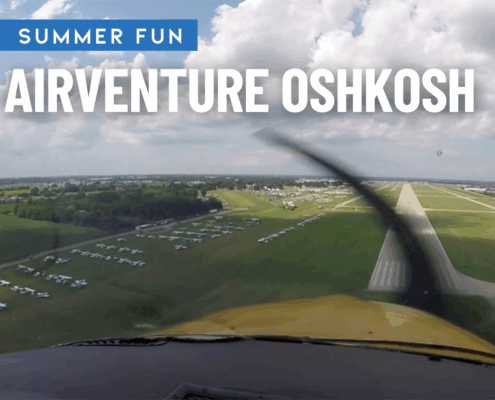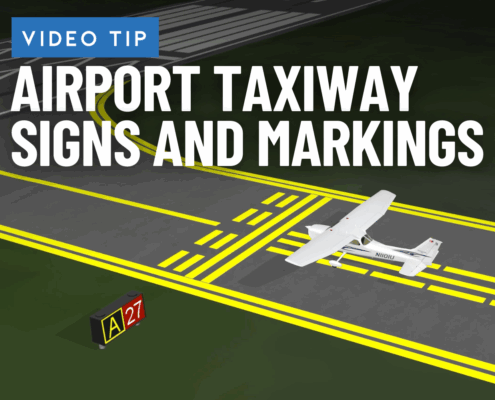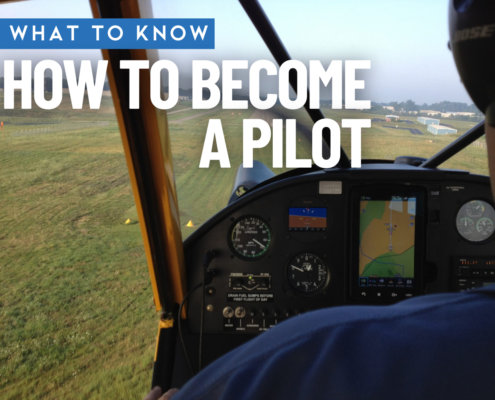 https://media.flighttrainingcentral.com/wp-content/uploads/2024/07/11093412/airventure-starts-monday.png
1000
1250
Flight Training Central Staff
https://media.flighttrainingcentral.com/wp-content/uploads/2022/01/05155154/FTC-logo-horizontal-fianl.png
Flight Training Central Staff2025-07-18 08:55:142025-07-11 09:34:41EAA AirVenture Oshkosh 2025 Starts Monday
https://media.flighttrainingcentral.com/wp-content/uploads/2024/07/11093412/airventure-starts-monday.png
1000
1250
Flight Training Central Staff
https://media.flighttrainingcentral.com/wp-content/uploads/2022/01/05155154/FTC-logo-horizontal-fianl.png
Flight Training Central Staff2025-07-18 08:55:142025-07-11 09:34:41EAA AirVenture Oshkosh 2025 Starts MondayLatest posts
 https://media.flighttrainingcentral.com/wp-content/uploads/2024/07/11093412/airventure-starts-monday.png
1000
1250
Flight Training Central Staff
https://media.flighttrainingcentral.com/wp-content/uploads/2022/01/05155154/FTC-logo-horizontal-fianl.png
Flight Training Central Staff2025-07-18 08:55:142025-07-11 09:34:41EAA AirVenture Oshkosh 2025 Starts Monday
https://media.flighttrainingcentral.com/wp-content/uploads/2024/07/11093412/airventure-starts-monday.png
1000
1250
Flight Training Central Staff
https://media.flighttrainingcentral.com/wp-content/uploads/2022/01/05155154/FTC-logo-horizontal-fianl.png
Flight Training Central Staff2025-07-18 08:55:142025-07-11 09:34:41EAA AirVenture Oshkosh 2025 Starts Monday
Taxi with confidence: Airport taxiway signs and markings for Pilots
All airports with ATC control towers in the U.S. (and some non-towered airports) use a standard set of pavement markings and elevated signs to guide pilots from the parking airport to the active runway. In this video, we'll explore the location and meaning of each in a simulated 3D airport environment so that you'll be well prepared on what to expect when taxiing at a large airport.

Unintended Consequences of Reducing ATP Minimum Hours
The aviation industry has long debated the minimum flight hours required for pilots to obtain an Airline Transport Pilot (ATP) certificate, a prerequisite for serving as a pilot in command at major airlines. Currently, the Federal Aviation Administration (FAA) mandates 1,500 hours of total flight time for most pilots seeking an ATP certificate, although certain exemptions (e.g., for military pilots or graduates of approved aviation programs) allow for reduced minimums—known as a Restricted ATP.

Featured Photo: Racing the Summer Storms
After beating storms out of CRW on a summer evening, the sunset popped through distant clouds, making for a serene view while climbing to cruising altitude.

Video Tip: VFR communications
Talking on the radio can be intimidating for new pilots, but with a few tips in mind it doesn't have to be hard. In our latest video tip, we give you a few basics to remember so you can sound like a pro when you talk to tower or on the CTAF. If you know what to expect, you'll be a lot more confident.

Quiz: Wake Turbulence Avoidance
Wake turbulence is an invisible hazard that presents an additional challenge for pilots operating light airplanes out of busy airports. Take our latest quiz and test your knowledge of proper avoidance techniques.
Video Tip of the Week
 https://media.flighttrainingcentral.com/wp-content/uploads/2024/04/17101133/Taxiway-markings-video-tip.png
1000
1250
Bret Koebbe
https://media.flighttrainingcentral.com/wp-content/uploads/2022/01/05155154/FTC-logo-horizontal-fianl.png
Bret Koebbe2025-07-17 10:00:262025-07-17 10:20:23Taxi with confidence: Airport taxiway signs and markings for Pilots
https://media.flighttrainingcentral.com/wp-content/uploads/2024/04/17101133/Taxiway-markings-video-tip.png
1000
1250
Bret Koebbe
https://media.flighttrainingcentral.com/wp-content/uploads/2022/01/05155154/FTC-logo-horizontal-fianl.png
Bret Koebbe2025-07-17 10:00:262025-07-17 10:20:23Taxi with confidence: Airport taxiway signs and markings for Pilots https://media.flighttrainingcentral.com/wp-content/uploads/2023/05/07104007/video-tip-vfr-communications.png
1000
1250
Bret Koebbe
https://media.flighttrainingcentral.com/wp-content/uploads/2022/01/05155154/FTC-logo-horizontal-fianl.png
Bret Koebbe2025-07-09 08:55:572025-07-07 10:40:35Video Tip: VFR communications
https://media.flighttrainingcentral.com/wp-content/uploads/2023/05/07104007/video-tip-vfr-communications.png
1000
1250
Bret Koebbe
https://media.flighttrainingcentral.com/wp-content/uploads/2022/01/05155154/FTC-logo-horizontal-fianl.png
Bret Koebbe2025-07-09 08:55:572025-07-07 10:40:35Video Tip: VFR communications https://media.flighttrainingcentral.com/wp-content/uploads/2023/03/02122708/Wind-direction.png
1000
1250
Bret Koebbe
https://media.flighttrainingcentral.com/wp-content/uploads/2022/01/05155154/FTC-logo-horizontal-fianl.png
Bret Koebbe2025-07-02 10:00:072025-07-02 12:41:29Video tip: How to determine the wind direction for takeoff and landing
https://media.flighttrainingcentral.com/wp-content/uploads/2023/03/02122708/Wind-direction.png
1000
1250
Bret Koebbe
https://media.flighttrainingcentral.com/wp-content/uploads/2022/01/05155154/FTC-logo-horizontal-fianl.png
Bret Koebbe2025-07-02 10:00:072025-07-02 12:41:29Video tip: How to determine the wind direction for takeoff and landingQuizzes
 https://media.flighttrainingcentral.com/wp-content/uploads/2023/07/02161631/wake-turbulence-quiz.png
1000
1250
Chris Clarke
https://media.flighttrainingcentral.com/wp-content/uploads/2022/01/05155154/FTC-logo-horizontal-fianl.png
Chris Clarke2025-07-07 08:55:072025-07-02 16:17:13Quiz: Wake Turbulence Avoidance
https://media.flighttrainingcentral.com/wp-content/uploads/2023/07/02161631/wake-turbulence-quiz.png
1000
1250
Chris Clarke
https://media.flighttrainingcentral.com/wp-content/uploads/2022/01/05155154/FTC-logo-horizontal-fianl.png
Chris Clarke2025-07-07 08:55:072025-07-02 16:17:13Quiz: Wake Turbulence Avoidance https://media.flighttrainingcentral.com/wp-content/uploads/2024/03/05105244/weight-and-balance-quiz.png
1000
1250
Chris Clarke
https://media.flighttrainingcentral.com/wp-content/uploads/2022/01/05155154/FTC-logo-horizontal-fianl.png
Chris Clarke2025-06-09 08:55:542025-06-18 12:12:15Quiz: Airplane Weight and Balance
https://media.flighttrainingcentral.com/wp-content/uploads/2024/03/05105244/weight-and-balance-quiz.png
1000
1250
Chris Clarke
https://media.flighttrainingcentral.com/wp-content/uploads/2022/01/05155154/FTC-logo-horizontal-fianl.png
Chris Clarke2025-06-09 08:55:542025-06-18 12:12:15Quiz: Airplane Weight and Balance https://media.flighttrainingcentral.com/wp-content/uploads/2023/11/13152346/Landings-quiz.jpg
1000
1250
Chris Clarke
https://media.flighttrainingcentral.com/wp-content/uploads/2022/01/05155154/FTC-logo-horizontal-fianl.png
Chris Clarke2025-05-13 12:57:302025-05-13 15:27:45Mastering the approach and landing: A quiz for pilots
https://media.flighttrainingcentral.com/wp-content/uploads/2023/11/13152346/Landings-quiz.jpg
1000
1250
Chris Clarke
https://media.flighttrainingcentral.com/wp-content/uploads/2022/01/05155154/FTC-logo-horizontal-fianl.png
Chris Clarke2025-05-13 12:57:302025-05-13 15:27:45Mastering the approach and landing: A quiz for pilotsArticles
 https://media.flighttrainingcentral.com/wp-content/uploads/2024/07/11093412/airventure-starts-monday.png
1000
1250
Flight Training Central Staff
https://media.flighttrainingcentral.com/wp-content/uploads/2022/01/05155154/FTC-logo-horizontal-fianl.png
Flight Training Central Staff2025-07-18 08:55:142025-07-11 09:34:41EAA AirVenture Oshkosh 2025 Starts Monday
https://media.flighttrainingcentral.com/wp-content/uploads/2024/07/11093412/airventure-starts-monday.png
1000
1250
Flight Training Central Staff
https://media.flighttrainingcentral.com/wp-content/uploads/2022/01/05155154/FTC-logo-horizontal-fianl.png
Flight Training Central Staff2025-07-18 08:55:142025-07-11 09:34:41EAA AirVenture Oshkosh 2025 Starts Monday https://media.flighttrainingcentral.com/wp-content/uploads/2025/07/01100702/reducing-ATP-minimums.png
1000
1250
Jason Blair
https://media.flighttrainingcentral.com/wp-content/uploads/2022/01/05155154/FTC-logo-horizontal-fianl.png
Jason Blair2025-07-14 08:55:482025-07-01 10:07:51Unintended Consequences of Reducing ATP Minimum Hours
https://media.flighttrainingcentral.com/wp-content/uploads/2025/07/01100702/reducing-ATP-minimums.png
1000
1250
Jason Blair
https://media.flighttrainingcentral.com/wp-content/uploads/2022/01/05155154/FTC-logo-horizontal-fianl.png
Jason Blair2025-07-14 08:55:482025-07-01 10:07:51Unintended Consequences of Reducing ATP Minimum Hours https://media.flighttrainingcentral.com/wp-content/uploads/2025/07/03122625/june-testing-advisory-update.png
1000
1250
Flight Training Central Staff
https://media.flighttrainingcentral.com/wp-content/uploads/2022/01/05155154/FTC-logo-horizontal-fianl.png
Flight Training Central Staff2025-07-04 08:55:002025-07-03 12:26:48What’s New in Airman Testing: June 2025 Updates You Should Know
https://media.flighttrainingcentral.com/wp-content/uploads/2025/07/03122625/june-testing-advisory-update.png
1000
1250
Flight Training Central Staff
https://media.flighttrainingcentral.com/wp-content/uploads/2022/01/05155154/FTC-logo-horizontal-fianl.png
Flight Training Central Staff2025-07-04 08:55:002025-07-03 12:26:48What’s New in Airman Testing: June 2025 Updates You Should KnowWebinar Videos
 https://media.flighttrainingcentral.com/wp-content/uploads/2025/02/07111549/instrument-written-webinar.png
1000
1250
Flight Training Central Staff
https://media.flighttrainingcentral.com/wp-content/uploads/2022/01/05155154/FTC-logo-horizontal-fianl.png
Flight Training Central Staff2025-02-23 08:55:232025-02-20 18:24:37Webinar Video: How to Ace Your FAA Instrument Written
https://media.flighttrainingcentral.com/wp-content/uploads/2025/02/07111549/instrument-written-webinar.png
1000
1250
Flight Training Central Staff
https://media.flighttrainingcentral.com/wp-content/uploads/2022/01/05155154/FTC-logo-horizontal-fianl.png
Flight Training Central Staff2025-02-23 08:55:232025-02-20 18:24:37Webinar Video: How to Ace Your FAA Instrument Written https://media.flighttrainingcentral.com/wp-content/uploads/2025/02/05154246/simulator-webinar.png
1000
1250
Flight Training Central Staff
https://media.flighttrainingcentral.com/wp-content/uploads/2022/01/05155154/FTC-logo-horizontal-fianl.png
Flight Training Central Staff2025-02-16 08:55:542025-02-12 11:07:14Webinar Video: Home Simulation For IFR Training and Proficiency—a Pilot’s Perspective
https://media.flighttrainingcentral.com/wp-content/uploads/2025/02/05154246/simulator-webinar.png
1000
1250
Flight Training Central Staff
https://media.flighttrainingcentral.com/wp-content/uploads/2022/01/05155154/FTC-logo-horizontal-fianl.png
Flight Training Central Staff2025-02-16 08:55:542025-02-12 11:07:14Webinar Video: Home Simulation For IFR Training and Proficiency—a Pilot’s Perspective https://media.flighttrainingcentral.com/wp-content/uploads/2024/11/06112408/register-for-ipad-webinar-ipn.png
1000
1250
Flight Training Central Staff
https://media.flighttrainingcentral.com/wp-content/uploads/2022/01/05155154/FTC-logo-horizontal-fianl.png
Flight Training Central Staff2024-11-21 08:55:322024-11-20 15:12:57Webinar Video: Flying with the iPad as a Digital Copilot
https://media.flighttrainingcentral.com/wp-content/uploads/2024/11/06112408/register-for-ipad-webinar-ipn.png
1000
1250
Flight Training Central Staff
https://media.flighttrainingcentral.com/wp-content/uploads/2022/01/05155154/FTC-logo-horizontal-fianl.png
Flight Training Central Staff2024-11-21 08:55:322024-11-20 15:12:57Webinar Video: Flying with the iPad as a Digital CopilotGetting Started Tips
 https://media.flighttrainingcentral.com/wp-content/uploads/2025/05/08104840/5-Smart-Ways-to-Cut-the-Cost-of-Becoming-a-Pilot.png
1000
1250
Flight Training Central Staff
https://media.flighttrainingcentral.com/wp-content/uploads/2022/01/05155154/FTC-logo-horizontal-fianl.png
Flight Training Central Staff2025-05-15 08:55:272025-05-08 10:50:125 Smart Ways to Cut the Cost of Becoming a Pilot
https://media.flighttrainingcentral.com/wp-content/uploads/2025/05/08104840/5-Smart-Ways-to-Cut-the-Cost-of-Becoming-a-Pilot.png
1000
1250
Flight Training Central Staff
https://media.flighttrainingcentral.com/wp-content/uploads/2022/01/05155154/FTC-logo-horizontal-fianl.png
Flight Training Central Staff2025-05-15 08:55:272025-05-08 10:50:125 Smart Ways to Cut the Cost of Becoming a Pilot https://media.flighttrainingcentral.com/wp-content/uploads/2025/05/08101421/learn-to-fly-week.png
1000
1250
Flight Training Central Staff
https://media.flighttrainingcentral.com/wp-content/uploads/2022/01/05155154/FTC-logo-horizontal-fianl.png
Flight Training Central Staff2025-05-12 08:55:292025-05-12 11:37:33It’s Learn to Fly Week at Sporty’s and Flight Training Central
https://media.flighttrainingcentral.com/wp-content/uploads/2025/05/08101421/learn-to-fly-week.png
1000
1250
Flight Training Central Staff
https://media.flighttrainingcentral.com/wp-content/uploads/2022/01/05155154/FTC-logo-horizontal-fianl.png
Flight Training Central Staff2025-05-12 08:55:292025-05-12 11:37:33It’s Learn to Fly Week at Sporty’s and Flight Training Central https://media.flighttrainingcentral.com/wp-content/uploads/2025/05/08103304/how-to-become-a-pilot.png
1000
1250
Flight Training Central Staff
https://media.flighttrainingcentral.com/wp-content/uploads/2022/01/05155154/FTC-logo-horizontal-fianl.png
Flight Training Central Staff2025-05-11 09:20:422025-05-11 09:24:55How to Become a Pilot: Your Complete Guide to Learning to Fly
https://media.flighttrainingcentral.com/wp-content/uploads/2025/05/08103304/how-to-become-a-pilot.png
1000
1250
Flight Training Central Staff
https://media.flighttrainingcentral.com/wp-content/uploads/2022/01/05155154/FTC-logo-horizontal-fianl.png
Flight Training Central Staff2025-05-11 09:20:422025-05-11 09:24:55How to Become a Pilot: Your Complete Guide to Learning to FlyGetting Started Videos
 https://media.flighttrainingcentral.com/wp-content/uploads/2012/01/05182054/Screen-Shot-2016-01-12-at-4.30.01-PM.png
311
556
Bret Koebbe
https://media.flighttrainingcentral.com/wp-content/uploads/2022/01/05155154/FTC-logo-horizontal-fianl.png
Bret Koebbe2024-05-04 08:55:282024-05-04 10:13:58Video: choosing a flight school
https://media.flighttrainingcentral.com/wp-content/uploads/2012/01/05182054/Screen-Shot-2016-01-12-at-4.30.01-PM.png
311
556
Bret Koebbe
https://media.flighttrainingcentral.com/wp-content/uploads/2022/01/05155154/FTC-logo-horizontal-fianl.png
Bret Koebbe2024-05-04 08:55:282024-05-04 10:13:58Video: choosing a flight school https://media.flighttrainingcentral.com/wp-content/uploads/2012/01/05182058/Screen-Shot-2016-01-12-at-4.30.22-PM.png
310
556
Bret Koebbe
https://media.flighttrainingcentral.com/wp-content/uploads/2022/01/05155154/FTC-logo-horizontal-fianl.png
Bret Koebbe2021-10-04 16:29:132021-10-08 12:20:06Video: why learn to fly?
https://media.flighttrainingcentral.com/wp-content/uploads/2012/01/05182058/Screen-Shot-2016-01-12-at-4.30.22-PM.png
310
556
Bret Koebbe
https://media.flighttrainingcentral.com/wp-content/uploads/2022/01/05155154/FTC-logo-horizontal-fianl.png
Bret Koebbe2021-10-04 16:29:132021-10-08 12:20:06Video: why learn to fly? https://media.flighttrainingcentral.com/wp-content/uploads/2012/01/05182056/Screen-Shot-2016-01-12-at-4.30.15-PM.png
313
556
Bret Koebbe
https://media.flighttrainingcentral.com/wp-content/uploads/2022/01/05155154/FTC-logo-horizontal-fianl.png
Bret Koebbe2021-10-04 16:28:582021-10-08 12:25:44Video: how do you learn to fly?
https://media.flighttrainingcentral.com/wp-content/uploads/2012/01/05182056/Screen-Shot-2016-01-12-at-4.30.15-PM.png
313
556
Bret Koebbe
https://media.flighttrainingcentral.com/wp-content/uploads/2022/01/05155154/FTC-logo-horizontal-fianl.png
Bret Koebbe2021-10-04 16:28:582021-10-08 12:25:44Video: how do you learn to fly?Pilot Gear
 https://media.flighttrainingcentral.com/wp-content/uploads/2024/10/18110710/top-10-pilot-gear-FTC-post.png
1000
1250
Doug Ranly
https://media.flighttrainingcentral.com/wp-content/uploads/2022/01/05155154/FTC-logo-horizontal-fianl.png
Doug Ranly2024-12-02 08:54:072024-11-05 14:11:40Top 10 student pilot gifts
https://media.flighttrainingcentral.com/wp-content/uploads/2024/10/18110710/top-10-pilot-gear-FTC-post.png
1000
1250
Doug Ranly
https://media.flighttrainingcentral.com/wp-content/uploads/2022/01/05155154/FTC-logo-horizontal-fianl.png
Doug Ranly2024-12-02 08:54:072024-11-05 14:11:40Top 10 student pilot gifts https://media.flighttrainingcentral.com/wp-content/uploads/2024/04/13100409/LTF_book_Cover-scaled-1.jpg
2560
1701
Flight Training Central Staff
https://media.flighttrainingcentral.com/wp-content/uploads/2022/01/05155154/FTC-logo-horizontal-fianl.png
Flight Training Central Staff2024-04-13 10:04:242024-04-13 10:04:24Sporty’s introduces new book – Learn to Fly: A Comprehensive Guide to Private Pilot Training
https://media.flighttrainingcentral.com/wp-content/uploads/2024/04/13100409/LTF_book_Cover-scaled-1.jpg
2560
1701
Flight Training Central Staff
https://media.flighttrainingcentral.com/wp-content/uploads/2022/01/05155154/FTC-logo-horizontal-fianl.png
Flight Training Central Staff2024-04-13 10:04:242024-04-13 10:04:24Sporty’s introduces new book – Learn to Fly: A Comprehensive Guide to Private Pilot Training https://media.flighttrainingcentral.com/wp-content/uploads/2019/07/05162842/iPad-sentry-weather-1.jpg
1067
1600
Doug Ranly
https://media.flighttrainingcentral.com/wp-content/uploads/2022/01/05155154/FTC-logo-horizontal-fianl.png
Doug Ranly2024-02-07 14:00:052024-02-06 15:08:265 “must-have” products for IFR training
https://media.flighttrainingcentral.com/wp-content/uploads/2019/07/05162842/iPad-sentry-weather-1.jpg
1067
1600
Doug Ranly
https://media.flighttrainingcentral.com/wp-content/uploads/2022/01/05155154/FTC-logo-horizontal-fianl.png
Doug Ranly2024-02-07 14:00:052024-02-06 15:08:265 “must-have” products for IFR trainingResources
 https://media.flighttrainingcentral.com/wp-content/uploads/2024/01/16114829/checkride-day.png
1000
1250
Flight Training Central Staff
https://media.flighttrainingcentral.com/wp-content/uploads/2022/01/05155154/FTC-logo-horizontal-fianl.png
Flight Training Central Staff2024-01-29 08:55:592025-05-16 11:48:36A Comprehensive Guide to the FAA Knowledge Test
https://media.flighttrainingcentral.com/wp-content/uploads/2024/01/16114829/checkride-day.png
1000
1250
Flight Training Central Staff
https://media.flighttrainingcentral.com/wp-content/uploads/2022/01/05155154/FTC-logo-horizontal-fianl.png
Flight Training Central Staff2024-01-29 08:55:592025-05-16 11:48:36A Comprehensive Guide to the FAA Knowledge Test https://media.flighttrainingcentral.com/wp-content/uploads/2023/12/16114913/scholarship-directory.png
1000
1250
studentpltnews
https://media.flighttrainingcentral.com/wp-content/uploads/2022/01/05155154/FTC-logo-horizontal-fianl.png
studentpltnews2023-12-16 09:00:122025-05-16 11:49:20Browse our Free Scholarship Directory
https://media.flighttrainingcentral.com/wp-content/uploads/2023/12/16114913/scholarship-directory.png
1000
1250
studentpltnews
https://media.flighttrainingcentral.com/wp-content/uploads/2022/01/05155154/FTC-logo-horizontal-fianl.png
studentpltnews2023-12-16 09:00:122025-05-16 11:49:20Browse our Free Scholarship Directory https://media.flighttrainingcentral.com/wp-content/uploads/2015/01/05171640/Screen-Shot-2019-11-05-at-11.09.31-AM.png
538
1095
Eric Radtke
https://media.flighttrainingcentral.com/wp-content/uploads/2022/01/05155154/FTC-logo-horizontal-fianl.png
Eric Radtke2015-01-13 11:59:502024-01-22 10:17:18Sporty’s Learn to Fly Course
https://media.flighttrainingcentral.com/wp-content/uploads/2015/01/05171640/Screen-Shot-2019-11-05-at-11.09.31-AM.png
538
1095
Eric Radtke
https://media.flighttrainingcentral.com/wp-content/uploads/2022/01/05155154/FTC-logo-horizontal-fianl.png
Eric Radtke2015-01-13 11:59:502024-01-22 10:17:18Sporty’s Learn to Fly Course


